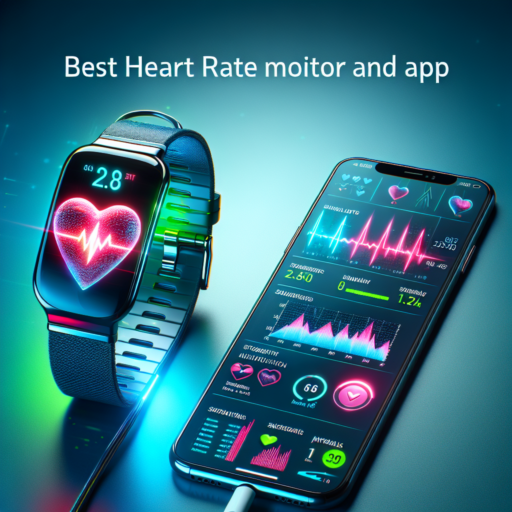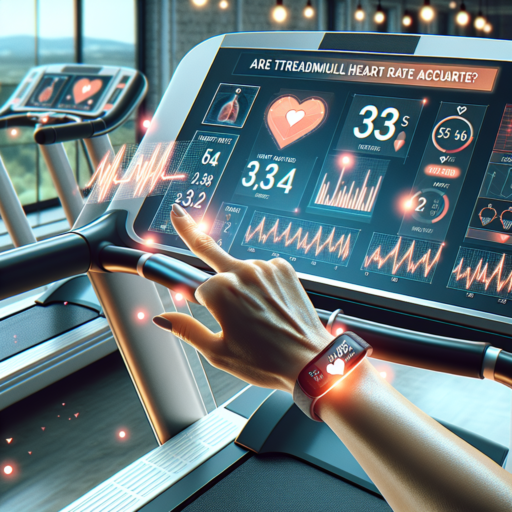Understanding Heart Rate Monitoring: A Comprehensive Guide
Heart rate monitoring has emerged as a vital tool for individuals seeking to enhance their fitness levels, better understand their health, or monitor certain medical conditions. By keeping track of your heart rate, you engage in an insightful journey into the workings of your heart and its reaction to various stress levels, exercises, and daily activities. This process is instrumental in identifying your cardiovascular system’s efficiency and adjusting your physical activities to match your fitness goals effectively.
Heart rate monitors come in various forms, including chest straps, wristbands, and smartwatches, each equipped with sensors designed to accurately measure your pulse. These devices work by detecting the electrical activity of your heart or the movement of your blood through your veins. With advancements in technology, the accuracy of these monitors has significantly improved, making them invaluable tools for athletes, fitness enthusiasts, and individuals monitoring heart-related health conditions.
Key Benefits of Heart Rate Monitoring
- Enhanced Fitness Tracking: By observing your heart rate during different exercises, you can tailor your workout regime to optimize weight loss, endurance building, or strength training, making your fitness journey more efficient and personalized.
- Health and Wellness Insights: Regular monitoring can provide critical data on your heart’s condition, alerting you to potential health issues before they become severe. It also helps in stress management through biofeedback techniques.
- Performance Optimization: Athletes leverage heart rate data to fine-tune their training, ensuring they stay within the optimal heart rate zones for peak performance and recovery.
The Importance of Monitoring Your Heart Rate
Understanding and monitoring your heart rate is a vital component of maintaining optimal health and physical performance. Your heart rate, expressed in beats per minute (BPM), offers insight into your cardiovascular fitness, metabolic rate, and overall physical well-being. By keeping a vigilant eye on this metric, you can make informed decisions about your exercise routines, stress management, and health-related goals.
**Early Detection of Health Issues**
Regularly monitoring your heart rate can serve as an early warning system for potential health problems. Abnormalities, such as unusually high or low beats per minute, may indicate underlying conditions that require medical attention. By recognizing these signs early, individuals can seek professional guidance promptly, leading to more effective interventions and a higher chance of recovery.
**Optimizing Workout Efficiency**
For fitness enthusiasts and athletes, understanding the relationship between heart rate and exercise intensity is crucial. Tracking your BPM during different types of workouts can help you stay within the optimal zone for achieving your fitness goals, whether you aim to improve cardiovascular health, lose weight, or build endurance. Adjusting your exercise intensity based on your heart rate ensures you are working out efficiently, maximizing gains while minimizing the risk of overtraining or injury.
How to Accurately Monitor Your Heart Rate
Monitoring your heart rate accurately is crucial for understanding your cardiovascular health and optimizing your exercise routine. Whether you’re a fitness enthusiast or someone looking to keep an eye on their heart health, knowing how to measure your heart rate correctly is essential.
Choose the Right Tool
First and foremost, selecting the right tool is essential for accurate heart rate measurement. Traditional methods like manual pulse counting can be effective but might not offer the precision that modern technology provides. Devices such as chest strap monitors, wrist-based trackers, and smartwatches have become incredibly popular due to their accuracy and ease of use. It’s important to choose a device that suits your lifestyle and meets your specific needs for monitoring your heart rate.
Understand the Best Time to Measure
Knowing when to measure your heart rate can significantly impact the accuracy of the data. For resting heart rate, it is best to measure just after waking up, while still lying in bed. This ensures that your reading isn’t influenced by daily stressors or physical activity. On the other hand, if you’re monitoring your heart rate to gauge exercise intensity, ensure to measure it at peak activity levels and use your device’s real-time monitoring capability to track changes.
Remember, accurately monitoring your heart rate is not just about the technology or methods you use; it also depends on consistency and understanding the context of your measurements.
Top Devices for Effective Heart Rate Monitoring in 2023
Maintaining a keen awareness of heart rate trends plays a pivotal role in modern health and fitness strategies. The year 2023 has brought forth innovative technologies making heart rate monitoring more accurate, accessible, and integrated into our daily lives. This article delves into the top devices that have set new standards for efficiency in heart rate tracking.
Smartwatches: The All-In-One Fitness Companion
In recent years, smartwatches have transcended their role as mere timekeepers to become comprehensive fitness and health hubs. Brands like Apple, Garmin, and Fitbit have launched models that not only offer precise heart rate measurements but also provide insights into heart health trends, VO2 max, and even stress levels. The integration of these features, alongside their capability to connect with other health apps and devices, positions smartwatches as premier choices for those looking to monitor their heart rate effectively in 2023.
Chest Strap Monitors: Unmatched Accuracy
For athletes and fitness enthusiasts seeking the utmost accuracy in heart rate data, chest strap monitors remain unmatched. Despite the rise of wrist-worn devices, chest straps like the Polar H10 and Garmin HRM-Dual continue to be favored for their close-to-skin sensor placement, minimizing discrepancies and providing real-time, reliable heart rate measurements during intense workouts and activities.
Wearable Fitness Trackers: The Budget-Friendly Alternative
Wearable fitness trackers have carved a niche for themselves as the budget-friendly rivals to more expensive smartwatches, without significantly compromising on accuracy or features. Devices such as the Fitbit Charge 5 and the Xiaomi Mi Band 6 offer an impressive array of features including heart rate monitoring, sleep tracking, and exercise recognition, making them attractive options for users keen to monitor their heart health without breaking the bank.
Interpreting Your Heart Rate Data: What the Numbers Mean
Understanding your heart rate data can be a key component in achieving optimal fitness levels and overall health. With the wide adoption of smartwatches and heart rate monitors, individuals have unprecedented access to their cardiac function. Yet, deciphering what these numbers indicate can sometimes be perplexing.
Your heart rate, measured in beats per minute (bpm), is influenced by various factors including age, fitness level, activity intensity, and even emotional states. Recognizing the significance of your resting heart rate (RHR) as opposed to your active heart rate can offer insights into your cardiovascular and overall health. The average resting heart rate for adults ranges from 60 to 100 bpm, with a lower RHR often signifying better physical fitness.
Diving deeper, understanding how your heart rate responds to exercise is critical. Different heart rate zones, determined as percentages of your maximum heart rate (MHR), are utilized to target specific training intensities. These zones range from light intensity, which is about 50-60% of your MHR, to maximum effort, which is 85-100%. Training in various heart rate zones can help improve cardiovascular endurance, increase fat burning, or enhance athletic performance based on your fitness goals.
Monitoring changes in your heart rate over time can also reveal progress in your fitness journey or highlight potential health concerns. Significant fluctuations in your RHR or unexpected numbers during activity might necessitate a closer look or even a consultation with a healthcare professional. Remember, while heart rate data provides valuable insights, it’s one of many tools to assess health and wellness.
Benefits of Regular Heart Rate Monitoring for Athletes
Keeping track of your heart rate is not just about the number on your watch or tracker; it’s a window into your cardiovascular and overall health. For athletes, regular heart rate monitoring plays a crucial role in tailoring training regimes, preventing overtraining, and reaching peak performance levels efficiently. Understanding the nuances of how heart rate impacts fitness can transform an athlete’s approach to their training and recovery processes.
One of the primary benefits of monitoring your heart rate is the ability to identify your personal heart rate zones. These zones represent different intensity levels of exercise, each with its specific benefits ranging from fat burning to aerobic and anaerobic training. By training within these targeted zones, athletes can optimize their workout efficiency, ensuring that every run, cycle, or swim is aimed towards their fitness goals, whether it be endurance, strength, or speed.
Another significant advantage is the prevention of overtraining. It’s common for dedicated athletes to push themselves too hard, too often, which can lead to exhaustion, injury, or even burnout. By monitoring resting and active heart rates, athletes can gauge their recovery status and adjust their training intensity and volume to promote optimal recovery. This informed approach helps in sustaining a healthy balance between training and rest, essential for long-term athletic development.
Moreover, heart rate monitoring is a gateway to understanding one’s overall health and fitness levels. Variations in resting heart rate over time can indicate improvements in fitness or flag potential health issues, providing invaluable insights for athletes aiming to maintain a keen edge on their performance and well-being. This level of insight empowers athletes to make data-driven decisions about nutrition, sleep, and stress management, all of which are pivotal to achieving top-tier performance and longevity in their sporting careers.
Using Heart Rate Monitoring to Improve Your Cardiovascular Health
Maintaining optimal cardiovascular health is a cornerstone of overall wellness, and heart rate monitoring has emerged as a technologically driven method to achieve this goal. By understanding and tracking your heart rate, you’re not just observing numbers, but you’re gaining insight into the efficiency and condition of your heart. This strategy allows individuals to tailor their exercise and daily activities to improve their heart’s strength and functionality.
The foundation of utilizing heart rate monitoring lies in identifying your target heart rate zones. These zones are crucial for setting the intensity of your workouts to either increase endurance or burn fat, ensuring that every exercise session is maximized for cardiovascular benefit. This personalization aspect of heart rate monitoring helps avoid overexertion and undertraining, keeping your heart working optimally within a safe threshold.
Moreover, regular use of heart rate monitors can lead to early detection of potential cardiovascular issues. Anomalies in resting heart rate or unexpected readings during physical activities can serve as preliminary indicators of underlying conditions, prompting timely medical consultation. Therefore, integrating heart rate monitoring into your daily routine isn’t just about enhancing cardiovascular health; it’s also about proactive health vigilance.
Heart Rate Zones Explained: Maximizing Your Workouts
Understanding your heart rate zones is a crucial aspect of optimizing your workouts for maximum efficiency and effectiveness. Each zone represents a different level of intensity and has specific benefits for your health and fitness goals.
What Are Heart Rate Zones?
Heart rate zones are divided into five categories, each corresponding to a specific percentage of your maximum heart rate (MHR). This stratification allows for targeted training sessions aimed at improving various facets of your physical fitness, such as fat burning, endurance, and high-intensity performance. Emphasizing the importance of these zones helps you tailor your workout regime to suit your objectives, whether that’s weight loss, improving cardiovascular health, or enhancing athletic performance.
Identifying Your Heart Rate Zones
To determine your heart rate zones, you first need to estimate your maximum heart rate. A common method is to subtract your age from 220. For example, for a 30-year-old, the estimated MHR would be 190 beats per minute (bpm). From here, you can calculate the different zones:
– Zone 1 (50-60% MHR): This is the very light intensity zone, perfect for warming up and cooling down. It helps in fat burn and encourages blood circulation.
– Zone 2 (60-70% MHR): A moderate intensity level that improves basic endurance and fat burning.
– Zone 3 (70-80% MHR): This aerobic zone improves your cardiovascular and respiratory system.
– Zone 4 (80-90% MHR): At this high-intensity level, you enhance your anaerobic capacity and speed.
– Zone 5 (90-100% MHR): This zone, used sparingly, pushes you to your limit, improving maximum performance and speed.
Tailoring your exercise routines around these zones can remarkably improve the efficacy of your workouts, making them more structured, with clear objectives for each session. Your heart rate is a straightforward yet powerful tool that provides immediate feedback about how hard your heart is working, allowing you to adjust your intensity in real-time to stay within your target zone. This strategic approach engenders not only better workout results but also a deeper understanding and connection with your body.
Common Questions About Heart Rate Monitoring Answered
Understanding your heart rate is crucial for monitoring your fitness levels and spotting potential health issues early. But, with so many metrics and tools available, it can become overwhelming. We address some of the most common questions surrounding heart rate monitoring, providing clear and concise answers to help demystify the process.
What is the Ideal Heart Rate Range?
One of the first questions that come to mind when discussing heart rate monitoring is the ideal range for optimal health and fitness. Generally, a resting heart rate for adults ranges from 60 to 100 beats per minute (bpm). However, athletes and those in excellent physical condition may experience resting heart rates as low as 40 bpm. It’s essential to understand that individual targets may vary based on factors such as age, fitness level, and personal health conditions.
How Can I Monitor My Heart Rate?
Today, there are myriad ways to keep an eye on your heart rate, from traditional methods like feeling your pulse to sophisticated wearables that track your bpm in real-time. Wearable devices, such as fitness trackers and smartwatches, are increasingly popular for their convenience and comprehensive monitoring capabilities. These devices not only track your heart rate 24/7 but also provide insights into your heart rate variability, resting heart rate, and exertion levels during physical activity, making it easier than ever to keep tabs on your cardiovascular health.
Understanding the variations in heart rate and what they signify can offer invaluable insights into your overall well-being. By regularly monitoring your heart rate, you can adjust your exercise plans and daily routines to better suit your health needs and fitness goals, ensuring you stay on track towards leading a heart-healthy life.
No se han encontrado productos.
Tips for Getting the Most Out of Your Heart Rate Monitor
Maximizing the effectiveness of your heart rate monitor involves more than just wearing it during exercise. Understanding how to effectively use and interpret the data can significantly enhance your workout efficiency. Here are essential tips to ensure you’re getting the most out of your heart rate monitor.
Understand Your Heart Rate Zones
Firstly, it’s crucial to comprehend your heart rate zones. These zones are based on percentages of your maximum heart rate and they guide you in identifying the intensity of your workout. Whether you’re aiming for fat burning, endurance improvements, or peak performance, knowing your zones can tailor your sessions for optimal outcomes. Use your monitor to stay within the right zone, pushing yourself when needed or pulling back to avoid overexertion.
Sync With Your Training Plan
Integrating your heart rate monitor with your overall training plan can lead to significant performance gains. By aligning your daily and weekly workouts with heart rate targets, you ensure each session propels you towards your goals. Whether it’s a high-intensity interval training (HIIT) day or a low-intensity steady-state (LISS) session, your monitor is an invaluable tool for keeping you on track. Regularly compare your progress to your training plan to make adjustments as necessary.
Regular Calibration and Maintenance
Lastly, maintaining the accuracy of your heart rate monitor is paramount. Regular calibration, following the manufacturer’s instructions, will keep your readings precise. Clean your device according to the guidelines, especially the sensors, as sweat and dirt can interfere with its functionality. A well-maintained heart rate monitor ensures the reliability of the data, which is crucial for training efficiently and effectively.




